Top 20 beautiful, easy to grow and best air purifying aquatic plants
Aquatic plants not only have decorative effects, but they also help purify the air, making the room more airy. Join Ken to discover the top 20 most popular aquatic plants today!
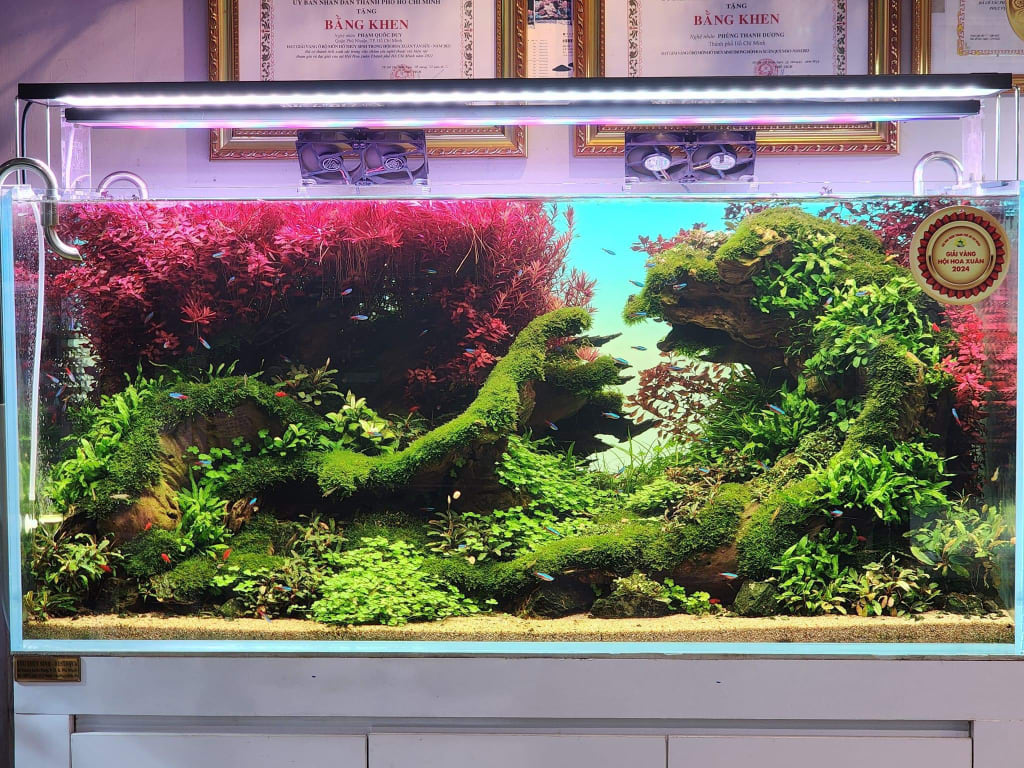
Table of contents
1. Overview of aquatic plants
2. Top 15 most beautiful and easy-to-grow aquatic plants today
3. Top 5 beautiful desktop aquatic plants, suitable for feng shui, attracting fortune
4. Current average price of aquatic plants
5. Experience in caring for aquatic plants
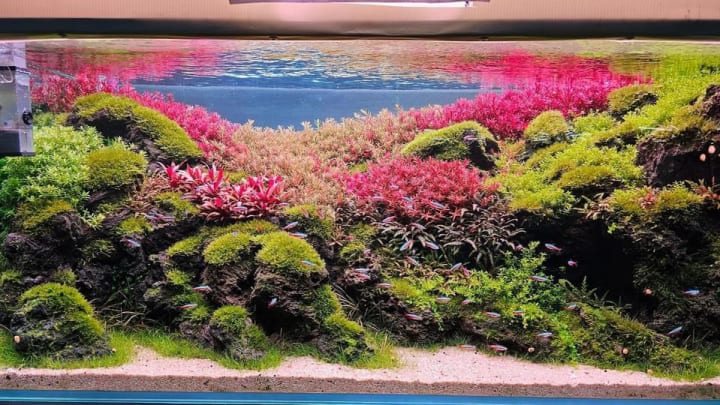
1. Overview of aquatic plants
What are aquatic plants?
Aquatic plants are plants that grow underwater, including salt water or fresh water. It has the ability to grow and develop in wet and flooded environments. It can live completely in water like algae, or live semi-aquatic with part of its body in the water and part of its body on land like lotus or water lily.
In addition, aquatic plants are considered an important factor in improving water quality and limiting algae growth. Because it has the ability to absorb ammonia gas in water and then release carbon dioxide (CO2) and oxygen to feed the aquarium.
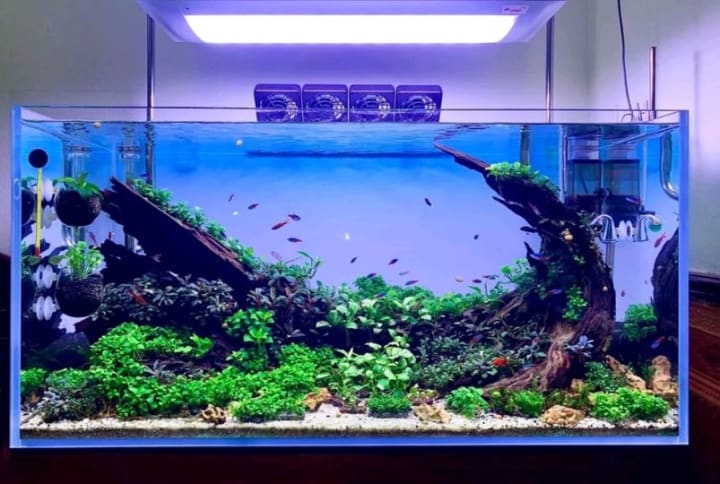
Advantages of aquatic plants
Good growth ability: Aquatic plants grow stably and are 2-3 times healthier than plants grown in soil. With the hydroponics method in glass pots, farmers can easily observe the growth process of plants, the growth and development of stems and roots.
Less care: You only need to change the water 1-2 times a week (helps limit pest invasion), add a little water and a drop of food to help the plant grow quickly and healthily.
Air filtration: Aquatic plant leaves can absorb carbon dioxide and other harmful gases, making the surrounding air fresher. Not only that, aquatic plants also help reduce harmful microorganisms and protect the health of your family members.
Adjust room temperature: Aquatic plants have the ability to reduce temperature, protect against radiation and produce oxygen (O2). In addition, placing aquatic plants in the room also increases humidity. Therefore, aquatic plants are an extremely reasonable choice on hot days.
Disadvantages of aquatic plants
Takes up a lot of space: Some aquatic plants grow too quickly and will take up a lot of space in the aquarium, causing an aesthetic loss. In this case, you just need to trim them to make them look neater and more aesthetic.
Need to change water and clean the tank regularly: The rapid growth of aquatic plants also leads to some hygiene issues. Growing plants will have old and dead cells that can contaminate the water and cause cloudiness in the fish tank. You need to change the water periodically to keep the fish tank clearer and more aesthetically pleasing.
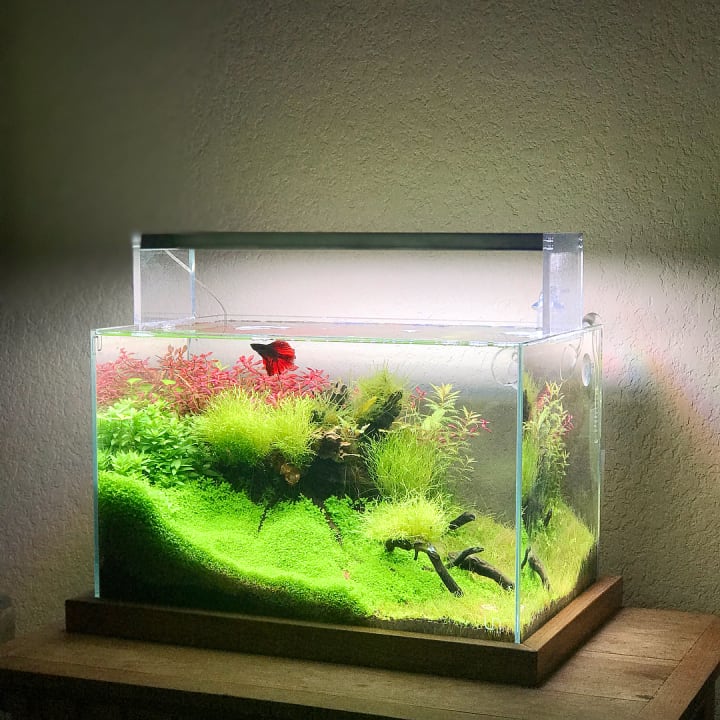
2. Top 15 most beautiful and easy-to-grow aquatic plants today
Foxtail seaweed - Aquatic plants do not need CO2
Foxtail seaweed is one of the popular aquatic plants, suitable for freshwater environments. This is an aquatic plant that does not require CO2. Foxtail algae is relatively easy to grow, grows very quickly and can take up a lot of space. Therefore, during planting, you can drop the plant in water without burying it in the ground and pay attention to pruning.
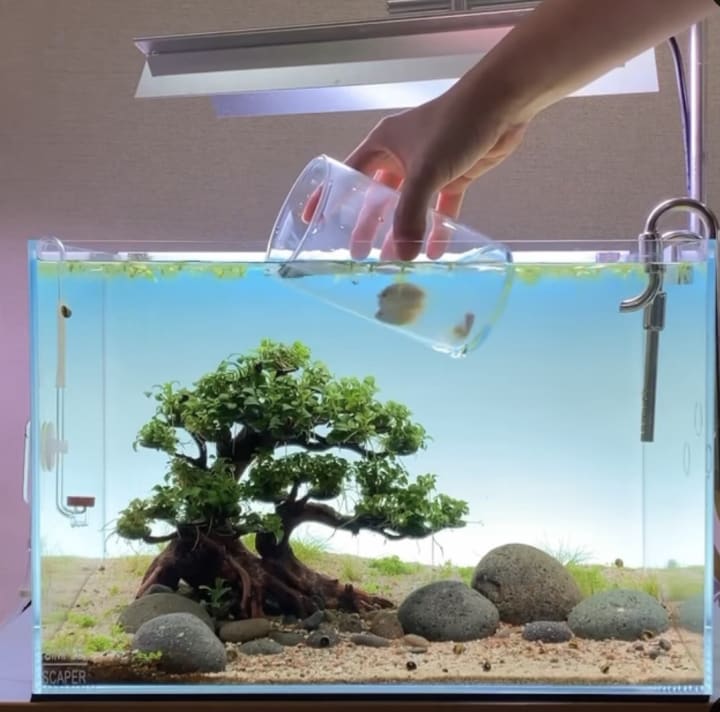
Foxtail seaweed - Aquatic plant that does not need soil
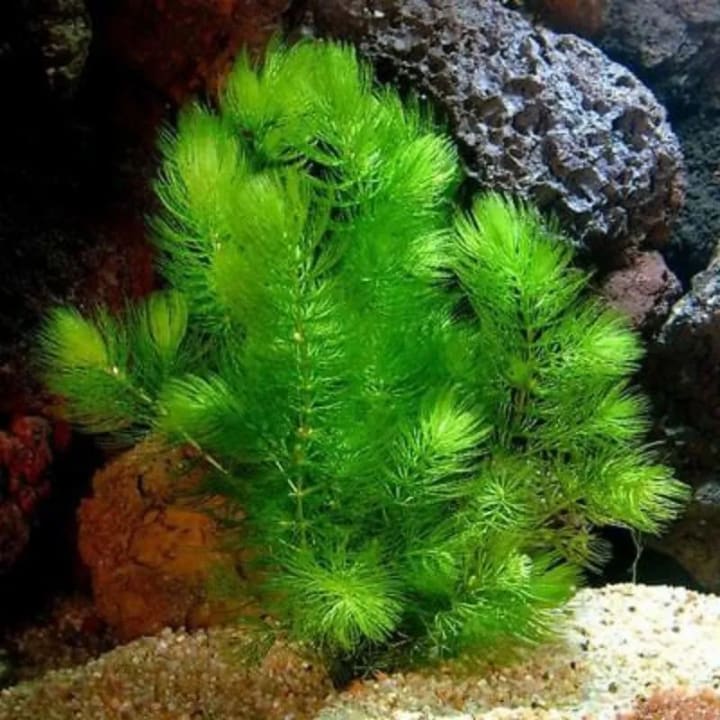
Foxtail seaweed - Aquatic plants do not need CO2
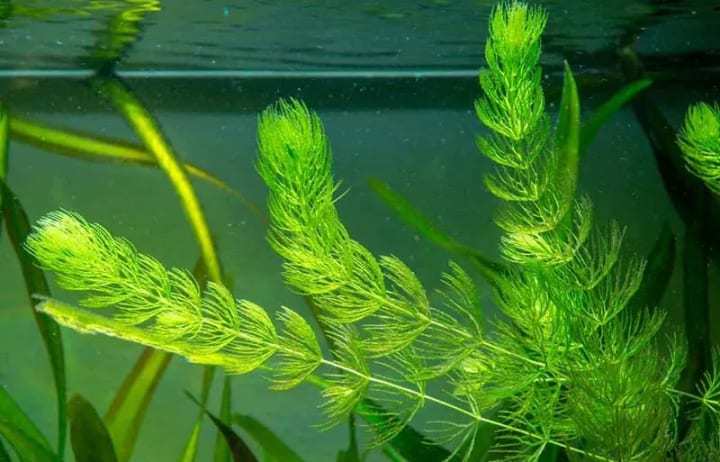
Green La Han seaweed - Small stupa aquatic plant
Green La Han seaweed is a famous plant grown mainly in large pots or glass vases. This aquatic plant is very easy to grow and adapts well to the water environment, it grows very strongly and especially this is an aquatic plant that does not require soil or CO2.
Because this plant has a very fast growth rate, you must be careful in pruning it to make the aquarium neater and more beautiful.
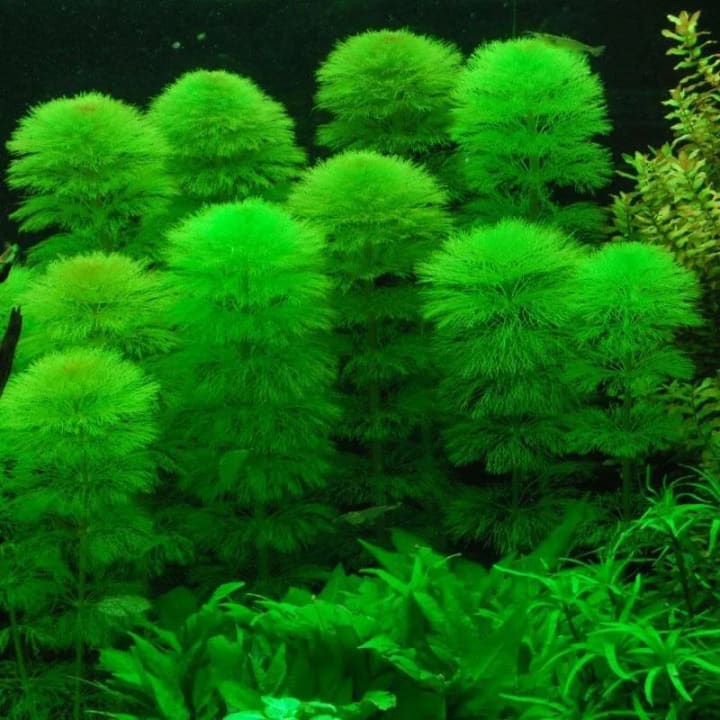
Green La Han seaweed - Small stupa aquatic plant
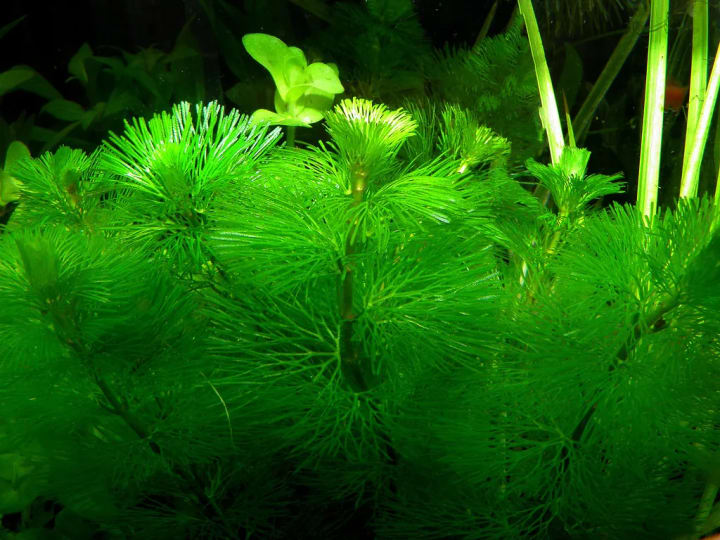
Green Arachnid - Aquatic plant that does not need soil
Spoon grass - Aquarium plant for fish tank
Dill grass is a leafy plant loved by many people. It has flat leaves similar to rice leaves but they are thicker and smoother. Dill grass is an aquatic plant suitable for growing in fish tanks, it grows in water and provides oxygen, but you can grow it in small pots on your desk.
In places with little light, spoon grass grows in height and vice versa, in places with little sunlight, the plant will branch better. When buying, choose plants with long, smooth leaves, not new plants, to avoid sudden death when exposed to water.
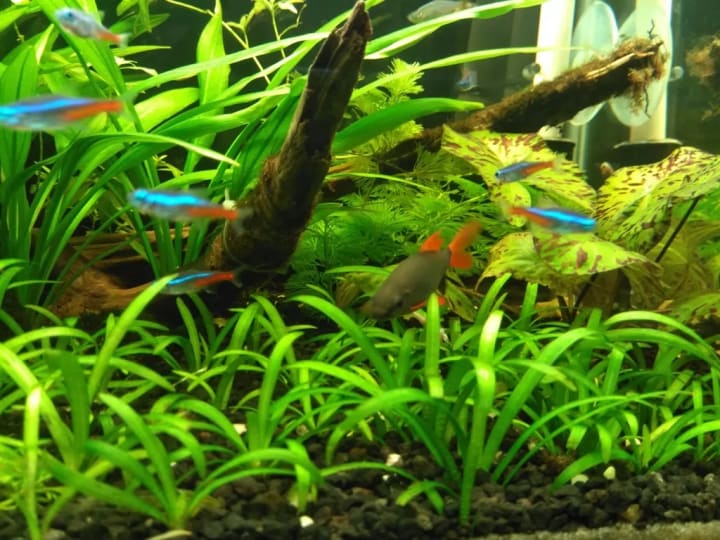
Spoon grass - Aquatic plant that raises fish
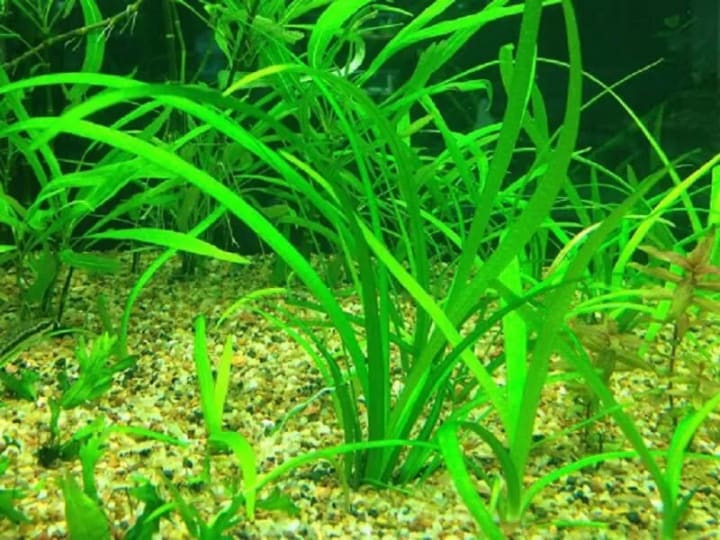
Japanese duckweed - Aquatic plant that filters water
Japanese water hyacinth is an aquatic plant belonging to the water hyacinth family, living in still waters and growing especially quickly. In environments with lots of light and high humidity, leaves grow well and float on the water surface.
In addition, leaves also absorb toxins in water, filter excess impurities and create a clean and fresh water environment. Therefore, this is an aquatic plant suitable for growing in fish tanks.
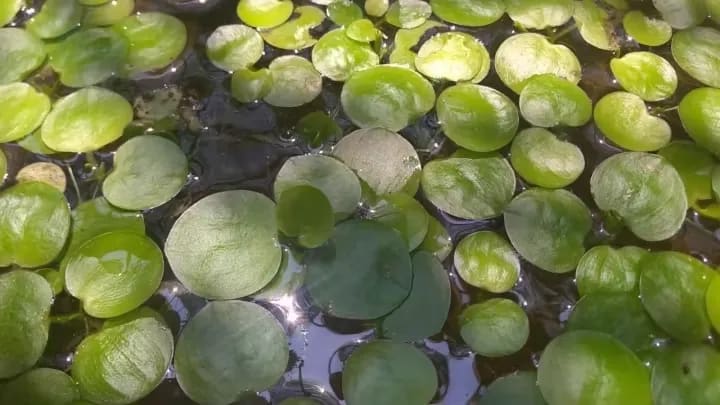
Japanese duckweed - Aquatic plant that filters water
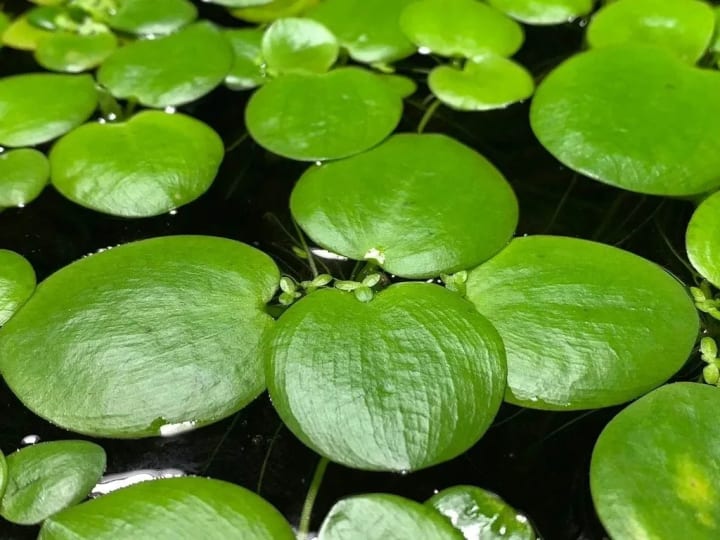
Japanese water hyacinth - Aquatic plant that effectively filters water
Pearl - Aquatic plant for fish tank
The advantage of this aquatic plant is that it is easy to grow, easy to care for, does not need much nutrition and grows very quickly. However, the pearl plant is quite small in size, so you should plant it in large quantities to create an aesthetically pleasing pearl carpet. In particular, tapioca plants often absorb CO2 and emit O2 to help purify the air and create a cleaner and fresher space.
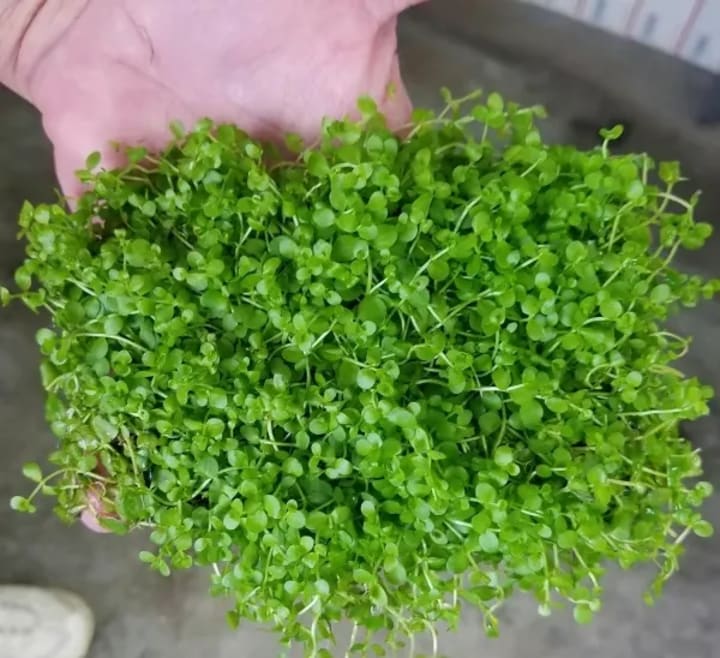
Pearl - Aquatic plant
Aquarium gun - Aquarium plant for fish tank
Water lily is one of the aquatic plants favored by Vietnamese people. Aquatic guns are famous for their vibrant colors and intense vitality. They have a striking red color mixed with eye-catching green, large and long-lasting foliage. The plant grows well with cool water temperatures and moderate light, however aquatic water lilies have a relatively slow growth rate.
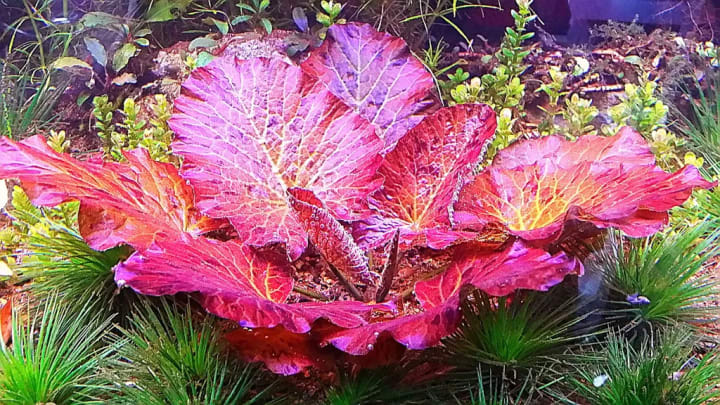
Aquatic water lilies - easy to grow aquatic plants
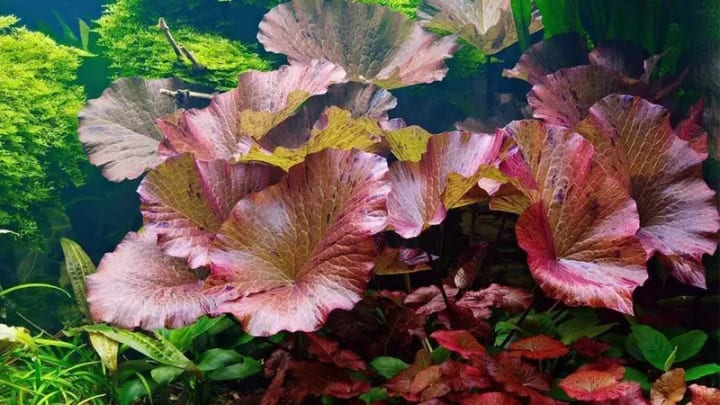
Chrysanthemum - Easy to grow aquatic plant
Chrysanthemum is an aquatic plant that is very easy to grow, easy to survive and does not require much nutrition, so many people grow it in fish tanks or aquariums. They are shaped like chrysanthemum leaves but do not have flowers.
In good light conditions, nutritious environment and CO2 supplementation, the tree will spread its branches and the leaves will have a striking yellow color. Planting chrysanthemums makes the tank more beautiful and lively. You can place it on your desk, living room, etc.
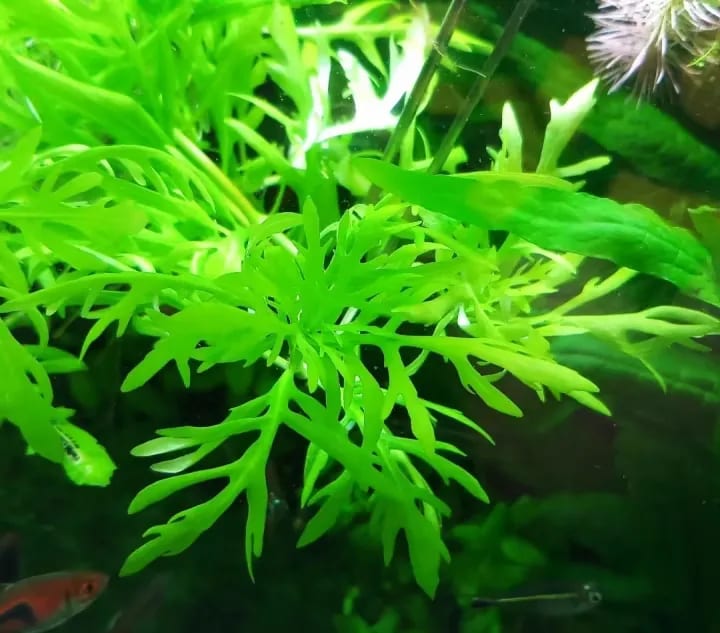
Chrysanthemum - Easy to grow aquatic plant
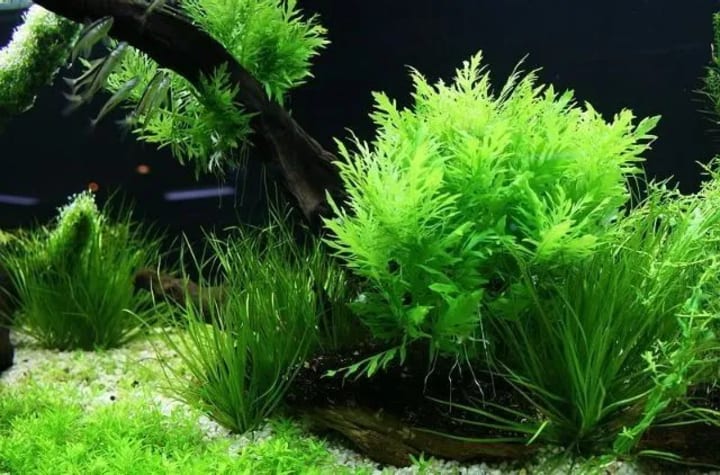
Dogtail seaweed - Aquatic plant that does not need soil
Dogtail seaweed is an aquatic plant shaped like a dog's tail. The stem of the dogtail plant is very soft, curves along the water stream extremely beautifully, and lives without soil.
Dogtail seaweed has strong vitality and growth. The tree does not require high nutrition, is easy to care for, and because the tree grows very quickly, it needs to be pruned regularly.
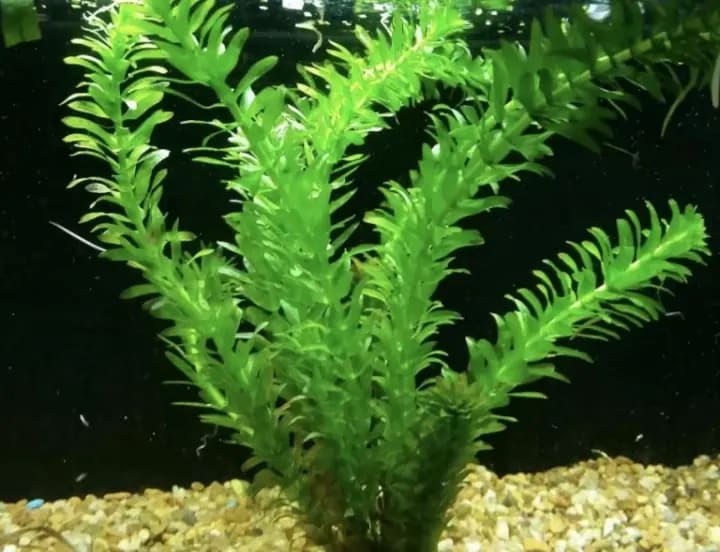
Dogtail seaweed - Aquatic plant that does not need soil
Java fern - Easy to grow aquatic plant
Java fern is an aquatic plant belonging to the fern family, with a sturdy stem, well adapted to floating in water without needing soil. The leaves have a very beautiful shape, smooth and slightly rough. This plant can be grown indoors, but it has a slow growth rate. You should place the plant in the office because it likes shade and does not need too much light.
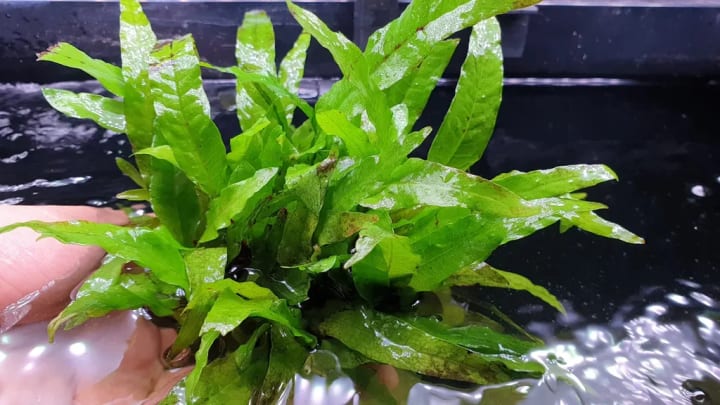
Java fern - Easy to grow aquatic plant
Drumstick Grass - Aquarium plant for fish tanks
Drumstick grass is an aquatic plant that can live for several years. The stems are small and often have white flowers at the top. The best environment for growing is a place with strong light, nutritional content and sufficient CO2. The average height of the plant is only 5 - 7 cm and is often used to create a highlight for fish tanks.
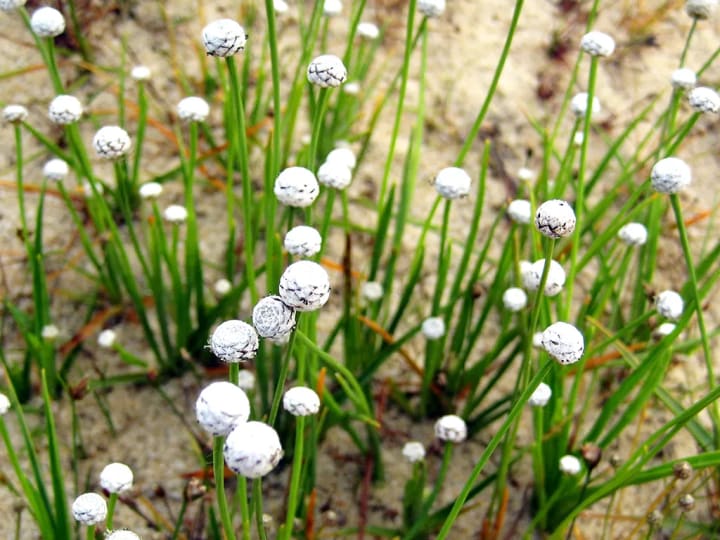
Drumstick Grass - Aquarium plant for fish tanks
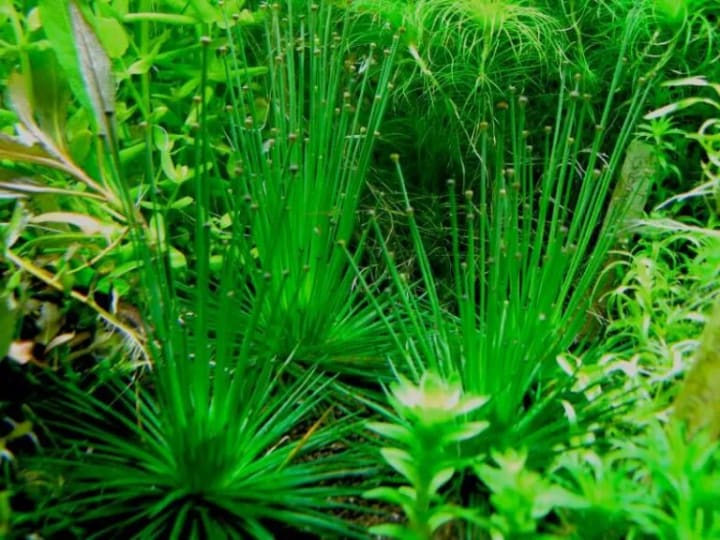
Japanese grass aquatic plants - Aquatic plants do not need CO2
The Japanese grass aquatic plant is a type of leafy plant that grows in bushes and has a very beautiful green color. Plants live in humid environments, so if you want to grow this plant, you must ensure appropriate conditions such as: good light intensity, moderate amount of CO2 gas, fertilizer containing nitrate, phosphorus, potassium and other trace elements. In particular, this plant cannot be grown on land.
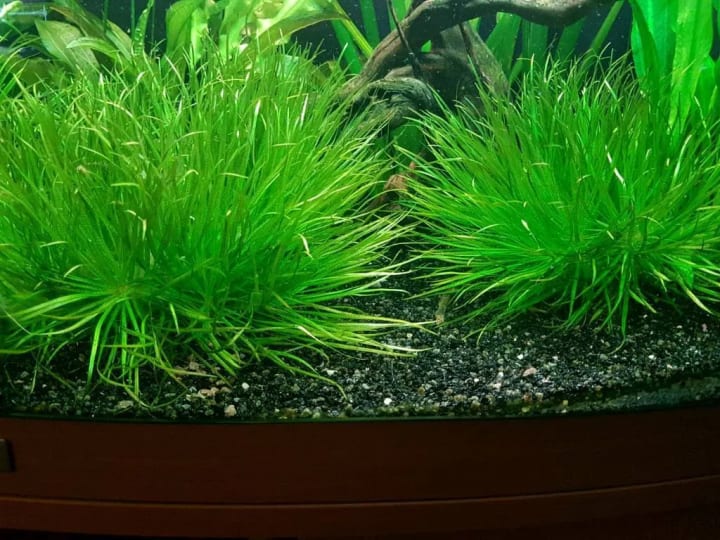
Japanese Grass - Aquatic plant that does not need CO2
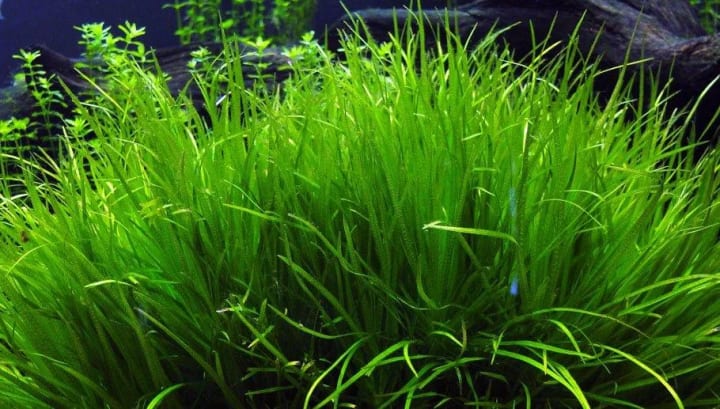
Umbrella lotus plant - Semi-terrestrial aquatic plant
Although lotus is a grass plant, it is very soft and easily damaged, and its leaves are coin-shaped and thin. Normally, each stem has only one beautiful green leaf. Umbrella lotus is a semi-terrestrial aquatic plant that is very easy to grow. They can adapt to most land and water environments.

Umbrella lotus plant - mini aquatic plant
Pennywort - Mini aquatic plant
Widely grown in Europe and Asia, pennywort is characterized by its small plant shape, spreading cone shape and beautiful bright green color. Pennywort plants are widely used in fish tank decorations because they have a beautiful bright green color, like a perfect picture.
This is a mini aquatic plant with strong vitality and is quite easy to grow. They grow very quickly and absorb nutrients well after a few weeks of planting. Mini aquatic plants are very easy to grow and do not require too much nutrition and light, but remember to change the water regularly for best growth.
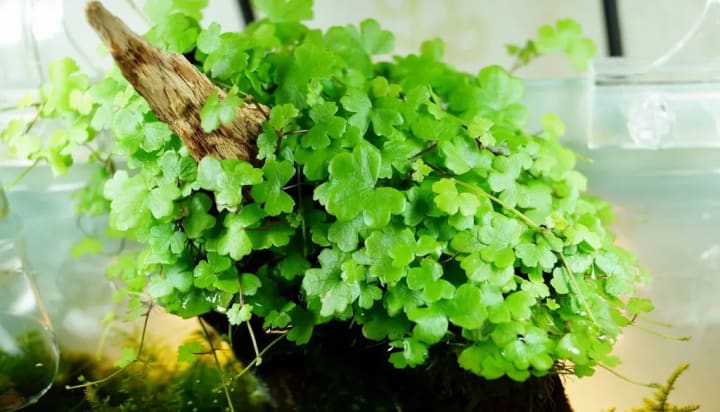
Dai Hong Diep - semi-terrestrial aquatic plant
The scientific name of the Red Diep plant is Cylindric Fruited Ludwigia, Ludwigia glandulosa. In recent years, they have been widely used in aquarium decoration.
In general, Dai Hong Diep is relatively difficult to grow, but thanks to its somewhat strange shape, it is very easy to see. That is the reason you should choose the Dai Hong Diep plant for your water landscape, because it is a great highlight that not all aquatic plants can do.
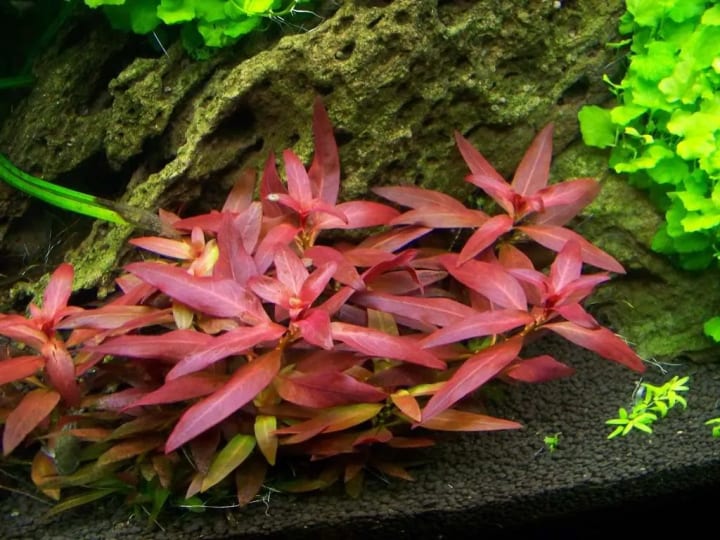
Horsetail - Aquatic plant that filters water
Horsetail contains a lot of silicic acid, silicates, manganese, aluminum and potassium, etc. These substances help remove excess water and strengthen the connection of muscle tissue. We often see them growing in abundance in early spring and summer.
In many studies, people have used the biochemical properties of horse grass in the best possible way for more effective applications in wastewater treatment and filtration.

Aquatic plant - Aquatic plant that filters water
The water bamboo plant has another name, strabismus, and its scientific name is Cyperus involucratus. The tree has a slender, unique shape with a ring of leaves arranged evenly like a row of beautiful bamboo.
The plant grows well in water, helping to filter and clean the water environment. But during the growing process, water plants often change leaves, the leaves will turn yellow, at this time you need to change the water and clean to make the aquarium more beautiful and aesthetic.
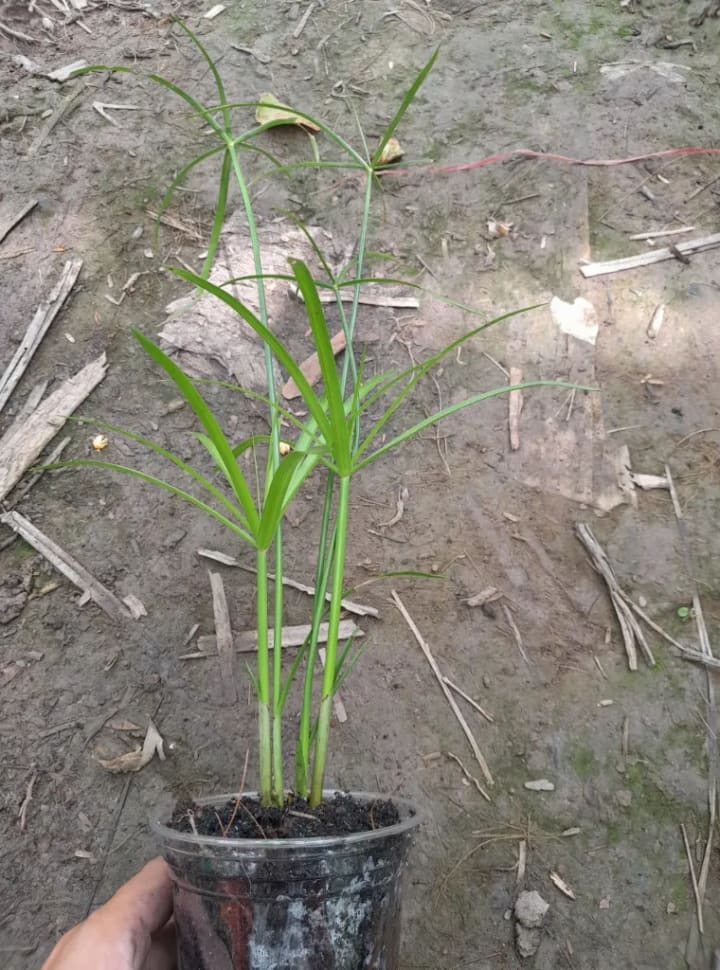
About the Creator
Ken aquariums
Telling stories my heart needs to tell <3 life is a journey, not a competition
If you like what you read, feel free to leave a tip,I would love some feedback
https://www.pinterest.com/Ken_Aquariums
https://s.shopee.vn/1B0pL9ZA9m
Enjoyed the story? Support the Creator.
Subscribe for free to receive all their stories in your feed. You could also pledge your support or give them a one-off tip, letting them know you appreciate their work.






Comments (1)
Very inspiring read, thanks for sharing. Please develop it further so I can have more of this interesting knowledge